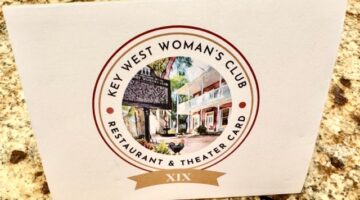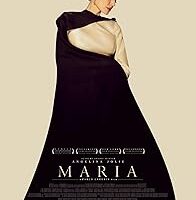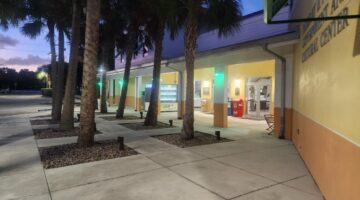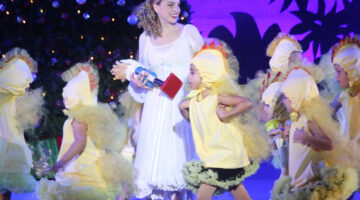Latest Revelations About Cuba
By Mark Howell
Renewed relations between the United States and Cuba have brought forth a flood of new historical detail concerning our neighboring island across the straits.
“Visions of Power in Cuba: Revolution, Redemption and Resistance” is a new book from the University of North Carolina Press by Lillian Guerra, an American historian of Cuban descent, “that should be a required (and saddening) assignment for Cuban school children,” says reviewer Enrique Krauze in the New York Review.
Guerra’s book is the result of her 20 years of research in the Cuban Exile and Cuban Revolution Collections at Yale. It tells the tale of the longest dictatorship in Latin American history (and now the longest lasting continuous regime on earth).
In his first months in power in 1959, Fidel Castro had wide public support but he soon instituted, in his own words, “revolutionary terror.” Instead of elections he installed what he called “true democracy,” by which he meant a show of hands in the Plaza de la Revolucion in Havana, and then he began a purge among those who had fought for the revolution. By March of ’59 Fidel had already contacted Moscow to arrange a Russian-run training program for the Cuban army and organized a secret police force, the G2.
Many intellectuals in the West who’d originally cheered the revolution, such as Jean-Paul Sartre and Simone de Beauvoir, withdrew that support once their books were banned in Cuba.
The most startling revelation in all the new books on revolutionary Cuba appears in “Back Channel to Cuba: The Hidden History of Negotiations Between Washington and Havana” by William M. LeoGrande and Peter Kornbluh, also just published by the University of North Carolina Press.
It details the hitherto little-understood secret efforts by President John F. Kennedy to reach a rapprochement between the U.S. and Castro’s Cuba after the Bay of Pigs disaster.
It was after that U.S. defeat and Fidel’s formal adoption of communism in May 1961 that Che Guevara apparently sent Kennedy a box of cigars and a letter offering some surprising concessions: payment for nationalized properties; a renunciation of the Cuban alliance with Communist Eastern Europe; free elections once the revolution had consolidated itself; a promise never to attack Guantanamo and to reconsider Cuba’s activities in other Latin American countries. Later, more surprisingly still, following the release of 1,200 Americans imprisoned in Cuba from the invasion force, Fidel himself expressed to Ted Szulc of The New York Times his desire to somehow re-establish connections with the U.S.
New research also reveals that one year later, despite the missile crisis of October 1962 and the CIA attempts to assassinate Fidel, the possibility of rapprochement still existed. “If he kicks out Soviets we can live with him,” said a note from the National Security Council.
Lisa Howard of ABC TV, who was close to Fidel, agreed with this assessment at the time. And Jean Daniel, editor of Le Nouvel Observateur, reported that he had been told by Fidel personally on November 20, 1962, “Maybe things are possible with this man.” Daniel had also recently visited the White House and was been given to understand that Kennedy might possibly become “the leader who may at last understand that there can be coexistence between capitalists and socialists even in the Americas.” Two days later, when he was informed by telephone that Kennedy had been assassinated, Castro turned to Daniel and said, “This is the end of your mission of peace.”
Enrique Krauze, writing last month in The New York Review, described how the American novelist and historian Waldo Frank was had become an enthusiastic supporter of the Cuban Revolution and “adapted some of the central themes of the Hebrew prophets to the region that so fascinated him.” Frank saw Central and South America as a new Promised Land where all the American republics could “reencounter their political roots in the democratic Judeo-Christian vision of the whole man.”
In 1959, Fidel Castro had his government sign a contract with Frank for a “biography of Cuba” to be called “Cuba: Prophetic Island,” for which he would be paid $5,000.
In the book, Frank wrote, “Fidel the Redeemer is no dictator but “an artist, of power … ruthlessly rejecting, selecting, finally shaping the nation into form.”
The book ended badly for Waldo. The Cubans ultimately refused to publish it, although it was released in Argentina as “Cuba: Isla profética.” It finally appeared in the U.S. under the imprint of a small, left wing New York publisher and was “savaged with ferocious reviews from both the political right and left,” writes Krauze. “Isolated and embittered, Waldo Frank died in 1967.”
But the story does not end there. This month the University Press of Florida is publishing a book by Waldo’s grandson, Marc Frank, called “Cuban Revelations: Behind the Scenes in Havana.”
Marc arrived in Cuba in in 1984 as a Reuter’s correspondent and in 1995 married a Cuban nurse “who has been his personal witness to the quality of medical services in Cuba,” writes Krauze.
Living with them are their two daughters from previous marriages about whose educational experience in Cuba Marc Frank writes: “Their teachers were examples of dedication, professionalism and concern even in the hardest of times, and the curriculum was more than adequate. There was little propaganda….”
We can surely expect more revelations on the true history of Cuba unfolding in the coming months.
[livemarket market_name="KONK Life LiveMarket" limit=3 category=“” show_signup=0 show_more=0]




Thanks for the research, Mark. I need to look much further into our “new” neighbor.
I agree with Rick. Thanks for the info on our nearest neighbor. As we re-acquaint ourselves with Cuba, I’m sure much more will be revealed.
Whenever I read the superlatives like those in the 2nd paragraph,
“longest-lasting dictatorship in Latin America”, longest lasting regime on earth, I cannot help but wonder just to what extent the revolution succeeded because those who fled, have never stopped sending back money and goods to those who stayed. I was assured by one family of fleers that the part of the family who stayed back would ultimately regain possession of their lands and homes and share them back with those who fled. Good luck with that.